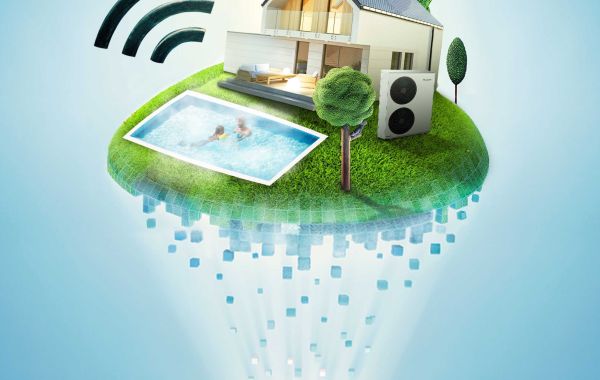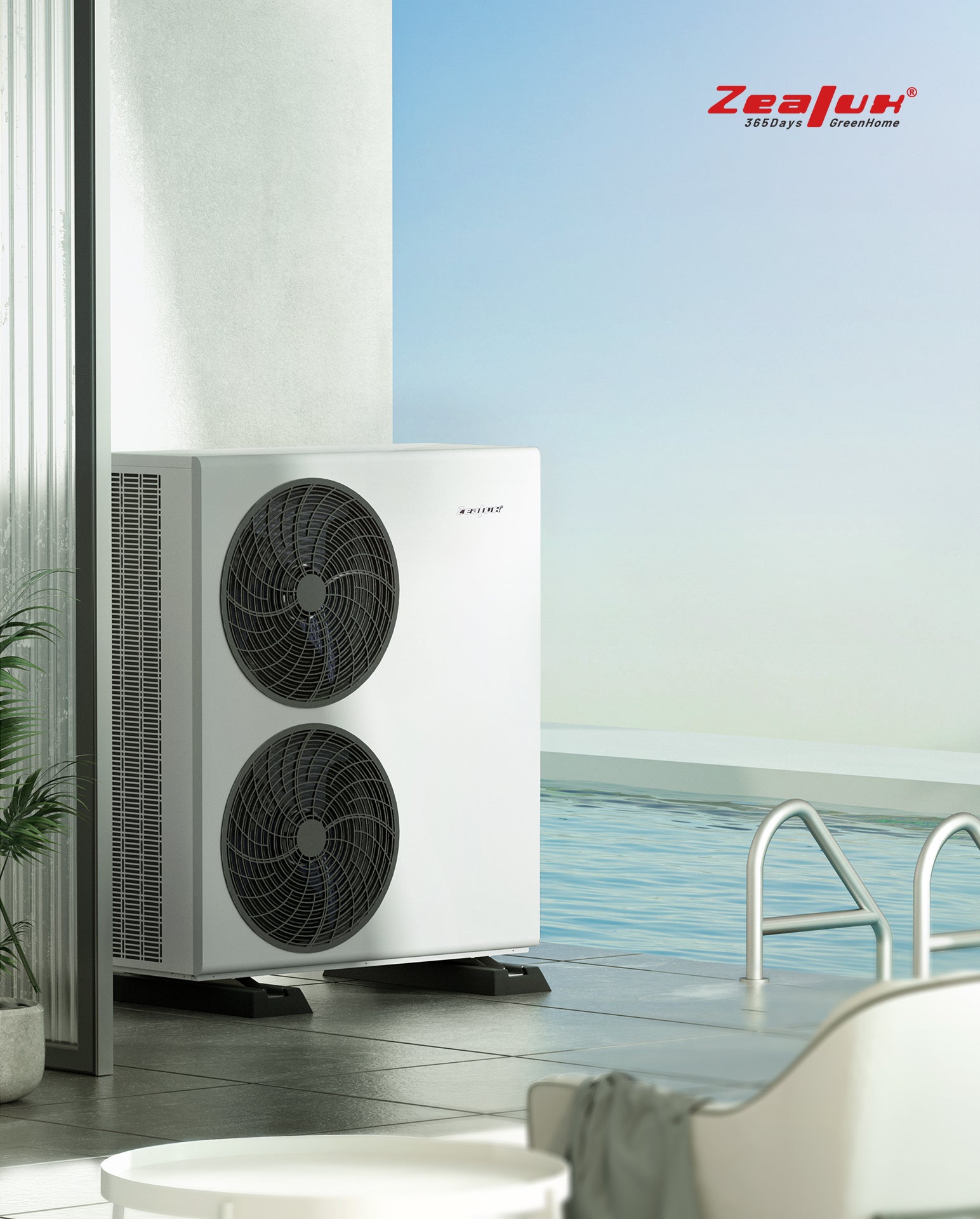As the winter chill sets in, there's a growing consciousness about the environmental impact of traditional heating methods. In the quest for sustainability, homeowners are increasingly turning to renewable heating solutions, such as the innovative inverboost heat pump, to keep warm without compromising the planet's health. In this exploration of the winter of 2024, we delve into the latest trends and technologies that are greening the way we stay warm.
Embracing Solar-Powered Heating Systems
One of the most promising advancements in renewable heating is the widespread adoption of solar-powered systems. In 2024, solar panels have become more efficient and affordable, making them an attractive option for homeowners looking to reduce their carbon footprint. Solar heating systems capture sunlight through panels installed on rooftops, converting it into energy that powers heating systems.
Not only do these systems utilize a clean and abundant energy source, but they also contribute to lower energy bills in the long run. The initial investment is offset by reduced reliance on traditional utilities, offering a sustainable and cost-effective solution for winter warmth.
The Rise of Biomass Heating
Biomass heating, another eco-friendly alternative, has gained traction as a renewable energy source. Biomass refers to organic materials like wood pellets, agricultural residues, or even dedicated energy crops. When burned, these materials release energy in the form of heat, providing a viable alternative to fossil fuels.
In 2024, advancements in biomass heating technology have improved efficiency and reduced emissions. Modern biomass heating systems are designed to minimize environmental impact, making them a green choice for those seeking a renewable winter heating solution.
Hydronic Heating: Liquid Comfort with Low Environmental Impact
Hydronic heating, often associated with energy efficiency, is making waves as a sustainable heating option. This system involves circulating heated water through pipes or tubing beneath the floor, radiating warmth evenly throughout the space. The beauty of hydronic heating lies in its adaptability—it can be powered by a variety of renewable energy sources.
By coupling hydronic heating with solar or geothermal energy, homeowners can enjoy the comfort of a warm space without relying on traditional, non-renewable power sources. This combination not only minimizes environmental impact but also ensures a consistent and comfortable indoor temperature.
Geothermal Heating: Tapping into the Earth's Energy
Geothermal heating, a technology that harnesses the Earth's internal heat, has become increasingly sophisticated and accessible. In 2024, geothermal heat pumps are gaining popularity for their efficiency and minimal environmental impact. These pumps extract heat from the ground during the winter months and release it into buildings for heating purposes.
The installation of geothermal systems requires some upfront investment, but the long-term benefits are substantial. Homeowners can enjoy lower energy bills and a reduced carbon footprint, making geothermal heating an attractive option for those committed to sustainable living.
The Role of Smart Thermostats in Renewable Heating
In the quest for greener winters, technology is playing a pivotal role. Smart thermostats, equipped with artificial intelligence, enable homeowners to optimize energy usage and reduce waste. These devices learn user preferences, adjusting heating levels based on occupancy patterns and external weather conditions.
By integrating smart thermostats with renewable heating systems, users can maximize efficiency and minimize energy consumption. The ability to remotely control and monitor heating systems through mobile apps adds an extra layer of convenience and control, empowering individuals to make environmentally conscious choices.
Harnessing Wind Power for Winter Warmth
In the pursuit of renewable energy solutions, wind power has emerged as a formidable contender for winter heating. Wind turbines, traditionally associated with electricity generation, are now being adapted to produce heat directly. Wind-powered heating systems use the kinetic energy from the wind to generate warmth, providing another eco-friendly alternative for homeowners.
In 2024, advancements in small-scale wind turbines and efficient heat conversion technologies have made wind-powered heating systems more accessible. Homes in windy regions can benefit from harnessing the power of the breeze to supplement or even replace traditional heating methods, contributing to a diversified and sustainable energy portfolio.
Integrating Thermal Energy Storage
A key challenge in renewable heating has been the intermittency of some renewable sources. To address this, thermal energy storage systems are gaining prominence. These systems store excess heat generated during peak renewable energy production periods, releasing it when demand is high or during periods of low renewable energy availability.
Thermal energy storage can be integrated with various renewable heating technologies, including solar and biomass systems. This innovation not only enhances the reliability of renewable heating solutions but also ensures a consistent and steady supply of warmth throughout the winter months.
Community-Based Renewable Heating Initiatives
The collective effort to green winters goes beyond individual households. Community-based renewable heating initiatives are gaining traction as communities come together to explore and implement sustainable solutions. Shared solar heating systems, biomass district heating projects, and collaborative investments in geothermal infrastructure are examples of how communities are pooling resources to create a larger, more impactful shift toward renewable heating.
In 2024, community initiatives are fostering a sense of shared responsibility for the environment. These projects not only promote sustainability but also create a sense of community engagement, encouraging individuals to actively participate in the transition to greener and more eco-friendly winter heating solutions.
Harnessing Ambient Air: The Versatility of Air Source Heat Pumps
In the quest for sustainable winter heating, air source heat pumps (ASHPs), including air to water heating system, have emerged as a versatile and energy-efficient solution. Operating by absorbing heat from the outdoor air, even in colder climates, ASHPs transfer this energy indoors through a refrigeration cycle. In 2024, advancements have made ASHPs increasingly viable, providing both heating in winter and cooling in summer, making them a year-round climate control solution.
One key advantage of air source heat pumps lies in their adaptability to various environments. While traditionally more suitable for milder climates, technological improvements have enhanced their efficiency. When paired with renewable energy sources like solar panels or wind turbines, ASHPs offer a sustainable approach to winter heating. Heat pump suppliers play a crucial role in making these innovations accessible, ensuring that homeowners can benefit from a reliable and efficient winter comfort solution. As we navigate the winter of 2024, the promise of air source heat pumps adds a new dimension to the array of renewable heating options, showcasing their potential while highlighting the importance of reliable suppliers in contributing to a cleaner and greener future.
Conclusion: A Collaborative Path to Sustainable Winter Warmth
As we embark on the journey of winter in 2024, the landscape of renewable heating solutions is expanding to encompass wind power, thermal energy storage, and community-based initiatives. Embracing these innovations not only promises a warmer winter but also symbolizes a collective commitment to a sustainable future.
The convergence of various renewable heating technologies and community-driven efforts illustrates a path forward—one where winter warmth is not only a personal comfort but a shared responsibility. By exploring and adopting these diverse approaches, we can collectively contribute to a more sustainable, eco-friendly, and warm future for winters to come. In the union of individual choices and community-driven initiatives, we find the true potential to green our winters and build a better, more resilient world. Acknowledging the pivotal role of leading heat pump manufacturers in making these technologies accessible ensures that our collective efforts translate into tangible, efficient, and environmentally conscious solutions.










